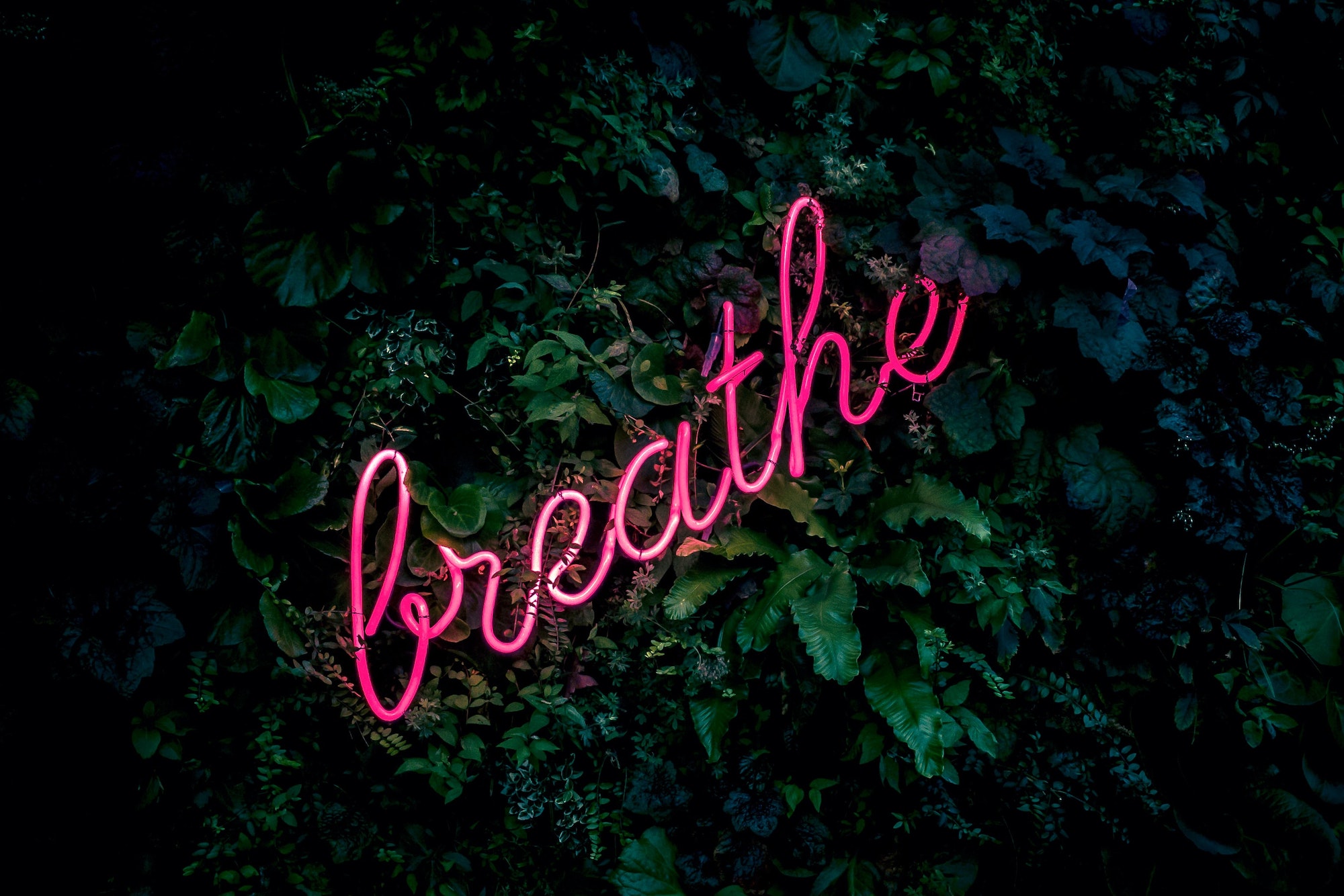Morning Stiffness Part 2
In Morning Stiffness Part 1, we discussed the possible causes for feeling stiff when we are waking up in the morning. Those were: lack of mobility, increased spinal disc size, and obstructed airway. Although I would like to point out a 4th cause to this situation, and that is HYPERVENTILATION.

Photo by Eli DeFaria on Unsplash
Hyperventilation is a condition in which you start to breathe very fast and mostly through the mouth. In our modern day and age, as stress levels rise as we go about our busy lives, we tend to mouth breath more than we nasal breath, with nasal breathing being what we should be doing. The only times you should mouth breath is if there is a dog chasing after you, or when you’re in danger when the brain is going to need all the oxygen that it can get to stay in “fight or flight” mode. Due to our lifestyle and improper coaching when training, we have built a habit to mouth breath not only during high stress situations, but also when rested as well.
Healthy breathing occurs with a healthy balance between breathing in oxygen and breathing out carbon dioxide. You upset this balance when you hyperventilate by inhaling more than exhaling. The more you inhale, the more the nervous system stays cranked up, and that can be detrimental to your quality of sleep, energy levels throughout the day, ability to focus, ability to perform complex tasks and movements, and more.
The brain becomes a little “saturated” with too much oxygen from mouth breathing, so our levels of C02 are decreased. With the excess oxygen levels at rest, the brain is still working a lot more than it should and then we cannot reach to the point of complete relaxation and allow our bodies to recover properly. This is usually the case when someone complains to me of pain in one area of the body, and then a few days later the pain has “moved” to a different area in the body, or if someone is not responsive to rehab methods and exercises. This is all due to this chemical imbalance within the brain.
Imagine your brain is the engine of a car and you are filling it up with gas. Now imagine that your car has another 15 tanks around it, and all of that gas must pass through one hose (neurons) into the engine. It is too much fuel for such little work. When we see people on hospital beds wearing oxygen masks and we see that the saturation of their blood is at 99-100%, that is not good! We need that level lower at 95-97% since we need some CO2 in our brain for it to function properly. Methods such as Buteyko, have focused extensively on the balance between O2 and CO2 by causing “air hunger”. Air Hunger is a depletion of oxygen into your system and a sudden increase in CO2 levels, especially combined with activity.
In BodMechanic ED, I show an Air Hunger exercise with squatting that I highly encourage you to check out! It is a quick and easy exercise, and if you find yourself struggling to blast out 5-6 reps, then you may need an exercise like this more than you need water in your daily life.
So what can we do to fix all of that?
Well, luckily there is much we can do to help you get out of stiffness, but understand, this does take conscious effort and of course, a change in lifestyle. Let’s dive into possible solutions:
1. Exhalation-Based Practice
We mention how Hyperventilation is due to mouth breathing and we consume more oxygen than required, then we must habitually drive our attention into exhaling more than we inhale. We tend to inhale more than exhale, especially in high stressful environments or situations, although the opposite must occur during rest. We need to double the amount of exhalation compared to inhalation so that this way, our respiratory system can help our nervous system calm down and allow for “rest and digest” to occur. The tricky part here is that IT TAKES CONSCIOUS effort for us to pay attention to our breathing. Remember, we breath 20,000-25,000 times a day, and that is all performed subconsciously. So it will take conscious effort to create a change within our breathing. It takes frequency of respiratory training in our everyday life in order for our brains to create new nerve connections for better breathing, a phenomena called Neuroplasticity.

Photo by Fabian Møller on Unsplash
An awesome breath ratio would be a 2:4-6 which means you breath in through the nose for 2 seconds and exhale through the nose or mouth for 4-6 seconds, and maintain that breath ration for more than 10 min. I can assure you that even 5 minutes of this can be really challenging. Those who are prone to hyperventilate may find this extremely hard, but that is part of the game. Every change is hard and requires energy.
We as human beings tend to forget to do our tasks. Especially when it comes to boring therapeutic exercises in which we tend to remember to do them whenever pain or discomfort kicks in. We need a reminder to do our breathing work, so a bright colored normal sized straw should help in which you can exhale through the mouth. Or another useful tool that is currently on the market is The Relaxator by ConsciousBreathing. This device is incredible yet simple. It is just a neon green plastic mouth pieces that you can hang around your neck and can easily do your breathing work. In my opinion, one of the best things about this device is the neon green color in which it draws your attention while you’re busy, reminding you to do your breath work. Another great feature of this device is that you can hear the air coming out from the device, so that in turn will help keep your focus on your breath due to the sound. So it basically puts you in a sate of meditation, keeping all your attention on counting your breaths. Just 10 minutes per day of breath work with this device (or without) focusing on exhalation, would make a world of a difference on how you feel overall with your mood, energy and movement.
2. Tape Your Mouth Shut When Sleeping (Safely)
Yes, you read that correct, and for those who have an annoying partner with an irritating snore, this is your ultimate weapon. Taping the mouth has been widely researched and has shown some powerful effects to our sleep. When nasal breathing, we improve gas exchange between O2, CO2 and NO2. Quite frankly one of the most noticeable responses after taping the mouth while sleeping is vasodilation (opening of blood vessels), which is due to the increased NO2 in our blood and nervous system. So yes, there may be chances you will see some veins popping out in the morning. As for males, fellas…you’ll probably wake up very stiff elsewhere rather than your achy muscles. Tape such as KT tape would work just fine! In fact, The Relaxator mentioned above also comes with Sleep Tape so you’ll get the best of both worlds!
For those of you who have a hard time breathing through your nose, especially those with a “deviated septum”, I highly recommend wearing a nose strip to increase nasal clearance. You can get Breath Right strips from your local pharmacy, and you can use that in conjunction with Sleep Tape.
3. MOVE, MOVE and MOVE SOME MORE!
Here’s where the good ole’ phrase “If you don’t use it, you’ll lose it” can fit perfectly. If you wake up stiff the next morning, you are either too sore from heavy training, or you just simply didn’t move enough. Going to the gym for a couple of hours while most of your day consists of sitting in front of a computer for another 8 hours won’t cut it. You MUST move nearly every hour. The joints need movement in order to keep the brain stimulated and healthy.

Photo by Nigel Tadyanehondo on Unsplash
Movement is the basic currency of health, fitness and performance. Great movement produces healthy, pain-free, high-level performance. Bad movement promotes pain, dysfunction, and progressive decreases in movement, which themselves lead to progressive decreases in brain function and health. Movement Is LIFE!
Now when I say move, I don’t just mean hitting the weights or doing some cardio. Movement must have some sort of NOVELTY in the mix. We want to make our movements more PREDICTIVE since that is what the brain does! Its job is survival and it does that via prediction. So, the more our movements become more predictable, the risk of injury is minimized. Hence why I personally think everyone should do some type of mobility work as well as engaging in other sport activities that are FUN. I don’t think anyone loves crawling on the floor in pain after a torturous heavy workout. That is a concept I cannot seem to understand. We have been led to believe that exercise must be tough and intense to produce optimal results, but that is far from the truth. Movement and exercise must be ENJOYABLE, making you want more and more of it every day. If we torture ourselves with exercise, our brains will automatically go into threat mode and eventually lock up all of our muscles.
Mobility work for every joint is key here. Mobility exercises create optimal stimulation to the brain using Proprioception. Proprioception is our awareness of every joint in our bodies in space. It is the FEELING of your joints and knowing where the position of those joints are when they move or when they don’t. If you can’t feel a joint, it sure as hell is hard to move it. Take it from a guy who was partially paralyzed from the waist down.
Proprioception is improved by sensory stimulation around and within the joints. Within our joints we have these receptors called mechanoreceptors that sense motion and those sensory inputs go straight up to the brain. Those receptors are mostly activated at end-ranges of the joint, and failure to reach at end ranges will eventually decrease the function of the mechanoreceptors.
In severe cases there is spinal fusion, which is a surgical procedure that fuses one vertebra with another using metal screws. This is an extremely popular procedure, although the consequences can be devastating. The moment that area becomes fused, the mechanoreceptors will eventually die and then there will be an accumulation of “threat” receptors call Nociceptors. These receptors detect threat in the area and if the brain does not like it, it will give you pain as a response.
In my Video Library on BodMechanic ED, I show some mobility movements that I consider quite easy to do called “The 6 Crucial Areas to Mobilize”. Those 6 areas are toes, ankles, hips, thoracic spine, wrist and fingers. The reason why these areas are so important is because they carry the most mechanoreceptors in the body. Wherever there is a lot of bone or joints, the more nerve ending are found within them and therefore they have the largest impact with the brain.
Another key element with mobility exercises is the frequency. People tend to do their “rehab exercises” once a day and hope that that would actually fix their issues. However, it doesn’t work that way. Mobility work has to be frequent in order for the brain to understand that what you are working on is very important. If you do not do your work enough, your brain will not consider it important enough and then your joint will become stiff again. The way to approach this would be to do 1 set of 5-10 reps for each area, every hour, or every couple of hours. That doesn’t mean that you would have to work all areas mentioned in one sitting, but pick one area such as an ankle or a wrist, do a set of mobility on them, and then the next hour can be a different body part. The point is to MOVE FREQUENTLY.
The more you move, the looser you feel. It is just that simple! The hard part here again is remembering to do the work! So set your alarm again for every hour and do something. Just MOVE – MOVEMENT IS LIFE!
To learn more, chat directly, participate in Live Streams every Thursday, and view all of my educational videos, Join BodMechanic Ed Today!
CONTACT FORM
If you have a question or need assistance, please send us a message using the form below. Please be as descriptive as possible when submitting your message.
